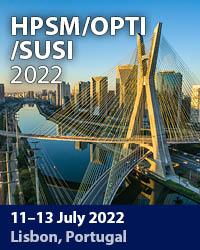Mode II Surface Crack Growth Under Rolling Contact Fatigue And Cyclic Shear Stress In Si3N4
Price
Free (open access)
Transaction
Volume
76
Pages
13
Page Range
175 - 187
Published
2012
Size
581 kb
Paper DOI
10.2495/TD120151
Copyright
WIT Press
Author(s)
K. Kida, T. Honda & E. C. Santos
Abstract
The effects of friction on surface crack growth behavior from pre-indentations of HIP-Si3N4 were investigated under rolling contact fatigue (RCF). Near surface contact stress distributions were calculated by Hanson’s analytical method, and the crack growth behavior was discussed in terms of stress intensity factors under rolling contact fatigue. It was found that friction promoted surface crack growth and the cracks grew in modeⅡ by shear stress (ΔKⅡ�� 3.6 MPam1/2, KⅡmax�� 1.8 MPam1/2, stress ratio R =-1). In order to confirm the effects of shear stress on surface crack growth, crack propagation tests under cyclic shear stress were carried out. We found the features concerning ModeⅡcrack growth: 1) The cracks grew by cyclic shear stress in ModeⅡ (initial value of ΔKⅡ is 3.0 MPam1/2); 2) Under the same ΔKⅡ= 3.0 MPam1/2, the cracks grow more when KⅡmax = 3.0 MPam1/2 (R = 0) than when KⅡmax = 1.5 (R =-1). Comparing the features of modeⅡcrack growth obtained from the crack propagation tests under cyclic shear stress and the RCF cracks, we conclude that the increase in values of stress intensity factors of mode II explains that the cracks under frictional contact are promoted by friction. Keywords: rolling contact fatigue, contact stresses, shear stress, surface crack growth, mode II crack growth, Si3N4.
Keywords
rolling contact fatigue, contact stresses, shear stress, surface crackgrowth, mode II crack growth, Si3N4





